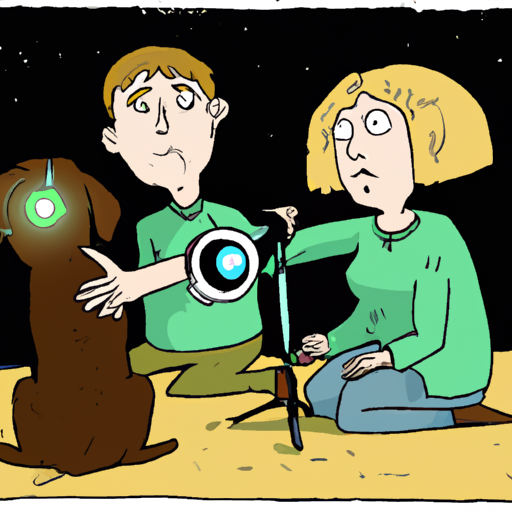Understanding The Basics of Canine Eye Health
In your role as a caregiver, you’ve likely become adept at noticing even the smallest changes in your furry friend. Anisocoria, the medical term for having pupils of unequal size, is a condition that you may observe in your dog. In this case, one of your dog’s eyes is more dilated than the other. This can be alarming, but understanding the basic anatomy and physiology of your dog’s eyes can help you make sense of the situation.
The canine eye is composed of several parts, including:
– The cornea: the clear, outermost layer of the eye
– The pupil: the black center part of the eye that controls the amount of light that enters
– The iris: the colored part of the eye that surrounds the pupil
The pupil’s size is controlled by involuntary muscle movements in the iris. The pupil dilates (widens) in low light to allow more light to enter, and constricts (narrows) in bright light to limit the amount of light entering the eye. If you notice that one of your dog’s pupils is persistently dilated, it could be a sign that something is affecting the nerve signals to the eye.
Possible Causes of Anisocoria
There are several potential causes of unequal pupil sizes in dogs, including:
- Physical injury: Any trauma to the eye can cause changes to the pupil.
- Glaucoma: This is a condition where pressure builds up inside the eye, which can cause one pupil to dilate more than the other.
- Uveitis: This is inflammation of the uvea, the middle layer of the eye, which can affect the iris and pupil.
- Neurological conditions: Certain neurological diseases can disrupt the signals between the brain and the eye, causing one pupil to dilate more than the other.
Evaluating Your Dog’s Eye Health
As a caregiver, it’s important to regularly check your dog’s eyes for any changes. Here’s a simple table to guide you through an at-home eye examination:
| Action | What to Look For | |
|---|---|---|
| 1 | Check the size of the pupils | They should be the same size |
| 2 | Look at the color of the iris | It should be clear and vibrant |
| 3 | Examine the white of the eyes | They should be white, not red or yellow |
| 4 | Check for any discharge | There should be no discharge, cloudiness, or tears |
What to Do If You Notice One of Your Dog’s Eyes Is Dilated
If you notice one of your dog’s pupils is persistently dilated, the best course of action is to consult a veterinarian. They can perform a thorough examination, potentially including special tests such as tonometry to measure eye pressure and ophthalmoscopy to examine the inside of the eye.
You’re doing a great job as a caregiver by noticing these changes in your dog’s eye, but diagnosis and treatment should be left to veterinary professionals.
Frequently Asked Questions (FAQs)
Q: Can anisocoria in dogs be temporary?
A: Yes, in some cases, anisocoria can be a temporary condition due to changes in light or mild irritation.
Q: Is anisocoria in dogs painful?
A: This depends on the underlying cause. Conditions like glaucoma can cause discomfort or pain.
Q: Can anisocoria be cured in dogs?
A: The treatment for anisocoria depends on its cause. In some cases, it can be managed or cured with medication or surgery.
Remember, as a caring pet parent, keeping an eye on your dog’s health—literally and figuratively—is one of the best things you can do for their wellbeing.



